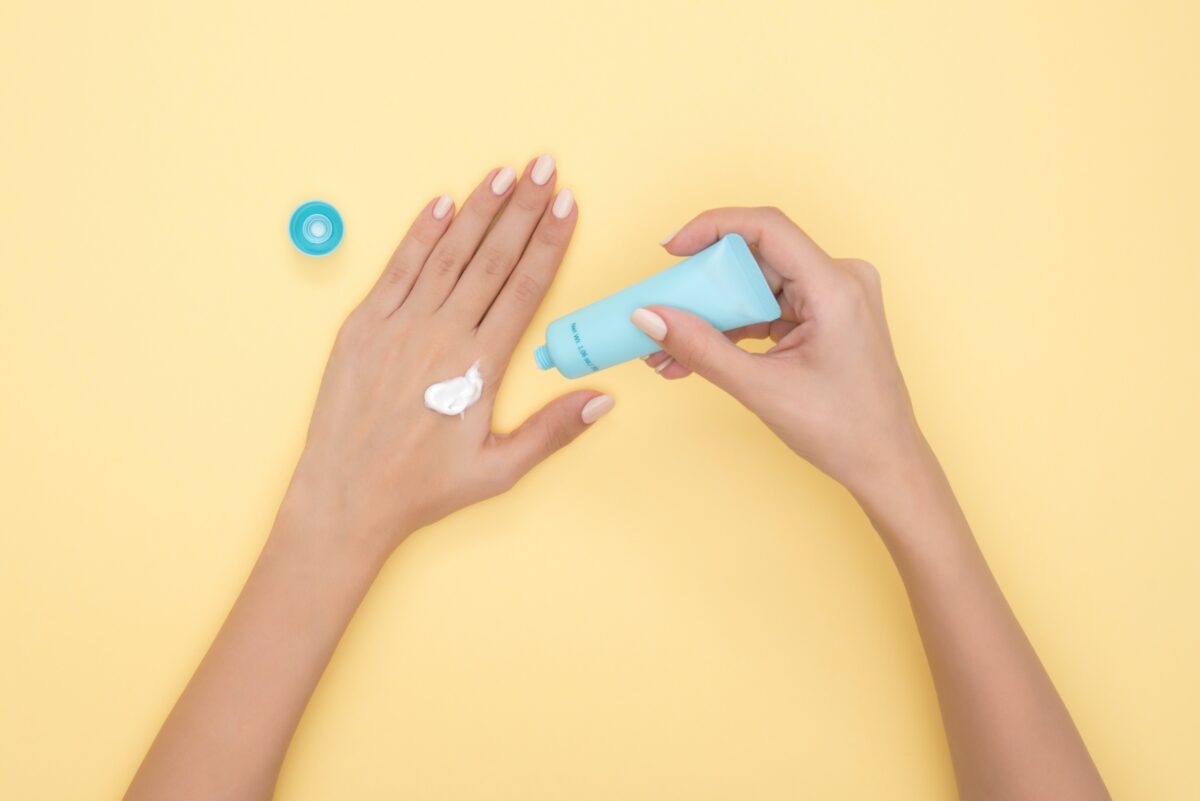How to Choose a Safe Sunscreen for Your Skin?

Whether you are out buying groceries, going to work, relaxing at the beach, or taking a walk just to feel the sun on your face, you can’t escape the sun’s radiations. Even if you remain indoors all day, harmful UV rays can still visit your skin uninvited through your windows.
This is why you need to protect your skin from getting damaged by sunlight by introducing sunscreen into your daily skincare routine. However, not all sunscreens are created equal. Some are more eco-friendly and effective, and less likely to cause skin irritation than others.
Knowing how to choose a sunscreen that’s right for your skin will help ensure you get adequate sun protection and prevent you from wasting hard-earned money on the wrong products.
In this post, we are going to walk you through everything you should keep in mind to choose a safe sunscreen and using it correctly.
Why Do You Need Sunscreen?
Did you know…
- Ultraviolet (UV) radiation has been proven to be a human carcinogen—a substance or agent capable of causing cancer.
- Skin cancers are the most common type of cancer in the world. They are mostly basal and squamous cell carcinomas and about 1% of melanomas, which accounts for most skin cancer deaths despite the small share.
- At least one in five Americans will develop skin cancer in their lifetimes.
- Having five or more sunburns—or doubles your risk of developing melanoma.
- About 90% of nonmelanoma and 86% of melanoma skin cancers are linked to exposure to UV radiation from the sun.
- Regular use of sunscreen—SPF 15 or higher—can cut down the risk of developing squamous cell carcinoma by about 40% and melanoma by 50%.
- Approximately 90% of skin aging is caused by sun exposure.
- The skins of people who use SPF 15 or higher sunscreen daily show 24% less aging than those who neglect to use sunscreen daily.
As you can see, constantly exposing your skin to the sun without sun protection can cause a lot of damage ranging from premature aging to cancer, and possibly, death. The only way to effectively cut down your risk of getting skin cancers and keep your skin looking amazing well into old age is by applying sunscreen daily.
Different Types of Sunscreen You Need to Know
There are two types of sunscreen based on the active ingredients they use and how they work to protect your screen from the sun’s UV radiation.
Mineral sunscreens
A mineral or physical sunscreen, as it is also known, is typically made with ingredients like zinc oxide and titanium oxide which function as a reflective barrier for UV rays. It sits on top of your skin and acts like a shield that blocks and bounces off rays from the sun before they penetrate your skin.
Mineral sunscreens begin to work as soon as they are applied. However, since they are designed to remain on the surface of your skin, they can come off easily when you sweat or come in contact with water.
Also, mineral sunscreens usually have a thicker consistency and can be hard to rub in completely, so you might end up with a little white cast depending on the brand you buy. If you have sensitive skin, you may be better off with mineral sunscreens because they are gentler on the skin and less prone to causing irritations.
Chemical sunscreens
Chemical sunscreens—also known as organic sunscreen—take a different approach to sun protection. They absorb UV rays and turn the rays into heat which is then released from your skin. You may find ingredients like octisalate, avobenzone, and octocrylene on the label for a chemical sunscreen.
Since chemical-based sunscreens get absorbed into the top layer of your skin instead of just staying on the skin’s surface, they are easier to spread and less likely to leave a white sheen. They also won’t come off as easily as mineral sunscreens, but they take between 15-30 minutes after application to start working.
This means you can’t just jump right into the sun after using a chemical sunscreen, you have to wait for the ingredients to bind to your skin first.
How Long Does Sunscreen Last?
No matter the amount of sunscreen you apply in one go, it’s still going to break down and wear off at some point. This is why it’s recommended that you reapply your sunscreen at least every two hours to ensure that you are being properly protected throughout the day.
If you go swimming or engage in any activity that makes you sweat excessively—e.g., exercising—make sure you reapply your sunscreen immediately after toweling off. Even if your sunscreen is water-resistant, still reapply it anyway because when it comes to sun exposure and its attendant risks, it’s better to be safe than sorry.
How Does Sunscreen Work?
Sunscreens with mineral-based filters such as titanium oxide and zinc oxide work by blocking UV rays and deflecting them away from your skin before they can cause any harm.
For sunscreens that use chemical-based ingredients like homosalate, octisalate, avobenzone, octinoxate, or oxybenzone, sun protection is offered by absorbing the UV rays and converting them into heat before they get a chance to damage your skin.
Some sunscreens also contain a mix of mineral and chemical ingredients, and they work by deflecting and taking in harmful UVB and UVA rays.
How, When, and Where to Use Sunscreen
Proper sunscreen application is key to giving your skin the best possible protection against the sun. Here are some best practices to keep in mind:
- Skimping on sunscreen is a no-no. You need one ounce—the equivalent of a shot glass or plastic medicine cup—to adequately cover your entire body. Alternatively, you can use 9 teaspoons of sunscreen to fully protect your body. Divide it accordingly: 1 teaspoon for your face and neck, 1 teaspoon for your chest and abdomen, 1 teaspoon for your back and buttocks, 1 teaspoon for each arm, and 2 teaspoons for each leg.
- Apply sunscreen daily, especially if you plan to be out in the sun for any period of time.
- For full protection, apply sunscreen about 15-30 minutes before you go outside and reapply every two hours until sundown. Reapply more often if you sweat too much or come out of the water after going swimming.
- Always use sunscreen on all parts of your skin that get exposed to the sun including your ears, lips, feet, hands, shoulders, eye area, and the back of your neck.
- Get a lip balm with SPF 15+ for your lips and a sunscreen stick for your eye area because unlike lotion, oils, or sprays, it won’t wipe off easily or stray into your eyes.
- Try to apply sunscreen to your body before getting dressed. But if you are already dressed, make sure you apply sunscreen underneath clothing straps so that your skin stays protected even if your clothes shift.
Get to Know Sunscreen SPF Numbers
To figure out how to choose sunscreen SPF, you have to know what it’s all about.
SPF means Sun Protection Factor. It’s a unit of measurement that shows how effective a sunscreen product is at protecting you from sunburn and other kinds of skin damage.
Sunscreens need to be tested to determine how much exposure to UVB radiation it would take to produce sunburn when using the sunscreen compared to how much exposure it would ordinarily take to cause sunburn without sunscreen. The result of that test reveals the SPF Number.
An SPF value of 15 simply means that it will take 15 times the amount of sun exposure to cause sunburn when using the sunscreen than it would with no sunscreen. The higher the SPF number, the bigger the level of exposure it would take to develop sunburn while using the product, and the greater the level of sunburn protection you will be getting.
However, the difference in protection becomes minuscule as the SPF number goes up. These are the UVB radiation protection levels you can get from different SPF sunscreens:
- SPF 15 — 93%
- SPF 30 — 97%
- SPF 50 — 98%
This does not mean that you do not need to reapply sunscreen every two hours if you are using a higher SPF. It just means you will get a bit more UVB blocking power from your sunscreen.
To offer your skin better protection, it is highly recommended that you go with an SPF 30 or higher when selecting a sunscreen.
5 Tips to Choose the Safe Sunscreen for Your Skin and Environment
Following this simple checklist when shopping for sunscreen will help you buy the right product every time.
1. Read the Label Carefully Before Choosing Your Sunscreen
A product’s labeling can contain a lot of information, some of which may not make sense to you. But here are the important things to look out for:
- Check the SPF — Whether you are buying a sunscreen lotion, oil, gel, stick, or powder, you want to make sure it has an SPF of at least 30.
- Look for “broad spectrum” — SPF protects you against UVB rays that cause sunburn and cancer, but it may not necessarily offer protection against UVA rays that also cause skin cancer, early skin aging, and skin damage. To guarantee that your sunscreen also protects you from UVB rays, the label has to specify that it is a broad-spectrum sunscreen.
- Beware of sprays — It’s hard to determine how much sunscreen ends up on your skin and how much is carried away by the wind when using sunscreen sprays. This makes it difficult to ascertain if you are using an adequate amount of sunscreen. It’s also easy for the particles to be inhaled or find their way into your eyes.
Know the Pros and Cons of Mineral and Chemical Sunscreens
Mineral and chemical sunscreens both offer ample sun protection. The one you choose to use will depend on your preference after weighing its benefits and disadvantages.
Chemical sunscreens have lighter, cosmetically elegant formulas and better absorption that suit daily wear and exercise.
However, doctors recommend going with mineral-based sun protectants if you are in the market for sunscreen for sensitive skin. Since they don’t get absorbed into your skin like chemical sunscreens, they are less likely to clog your pores and cause skin issues.
Mineral sunscreens are also deemed better for the environment than chemical sunscreens that can contain ingredients that are harmful to marine ecosystems. The only downside of mineral sunscreens is that it might leave a white cast behind when applied.
“Water Resistant” vs “Waterproof.”
The FDA has banned sunscreen manufacturers from claiming their product is “waterproof” because it is a complete lie. All sunscreen, no matter how well it is formulated, eventually breaks down and washes off when it comes in contact with water.
However, a sunscreen can be labeled as “water-resistant” if it has been proven to offer protection when in water for 40 or 80 minutes before it will need to be reapplied.
Choosing water-resistant sunscreen is a great idea if you plan to be in or near water. It can also offer extra protection on humid days by slowing down the rate at which you sweat away from your sunscreen.
Keep the Vitamin D Factor in Mind
When your body gets exposed to sunlight, it creates vitamin D which plays a significant role in your bone health, mood regulation, immune system functioning, and your general wellness.
Make sure you apply sunscreen before you go get your daily dose of vitamin D from the sun, so you don’t end up getting skin cancer along the way. You can also boost your vitamin D levels by taking supplements and eating foods like salmon, mackerel, beef liver, and egg yolks.
Avoid These Sunscreen Ingredients
Oxybenzone is a chemical ingredient that is often used in producing chemical sunscreens, but research has shown that this substance can be harmful to people. It can cause allergies, hormone problems, shorter pregnancies, lower testosterone levels in boys, and increase the risk of breast cancer and endometriosis.
One study conducted in 2020 found that rats exposed to oxybenzone were more likely to develop thyroid tumors. Although the harm that oxybenzone can cause to humans is yet to be conclusively proven, the chemical is no longer used in many parts of the world, including Europe.
Other active sunscreen ingredients such as octocrylene, octisalate, homosalate, octinoxate, and avobenzone have also been shown to be easily absorbed into the bloodstream. They are detectable in the body for up to 21 days after a single application of sunscreen containing these products.
However, the FDA still considers products with any of these ingredients to be safe to use, pending further testing.
What Else Should You Know to Choose a Safe Sunscreen?
Knowing how to choose a safe sunscreen and applying it regularly is most of the battle. But there are still a few things you need to be aware of to maximize the level of sun protection that you get.
- To ensure that your sunscreen is giving you the level of protection specified on its label, avoid using any sunscreen product that has passed its expiration date. If it has no expiration date, consider it expired if it was purchased more than three years ago.
- Some cosmetics products contain sunscreen but they typically don’t provide adequate sun protection so you still need to use sunscreen before your makeup.
- If you are allergy-prone, avoid using products that contain para-aminobenzoic acid (PABA).
- Expensive doesn’t equal better. A pricey product might have a better smell or texture, but that doesn’t mean it will be more effective than a cheaper brand.
- Try to limit your sun exposure by staying under a shade when out in public as much as possible. Wear protective clothing, a wide-brimmed hat, and sunglasses that block UV light.
Stay safe in the sun
No matter what the weather reports are saying or how cloudy the day seems, you should never leave your house or go a day without applying sunscreen. Consider it the most important step in your skin care regimen. Your future self will thank you for your efforts.
Sources
https://kidshealth.org/en/parents/sunscreen.html
https://health.clevelandclinic.org/how-to-choose-the-best-sunscreen-for-your-skin/
https://www.everydayhealth.com/skin-beauty/steps-choosing-clean-safe-sunscreen/
https://www.aarp.org/health/healthy-living/info-2022/safe-sunscreen.html
https://www.medicalnewstoday.com/articles/306838#what-is-sun-protection-factor
https://www.skincancer.org/skin-cancer-information/skin-cancer-facts/#melanoma




